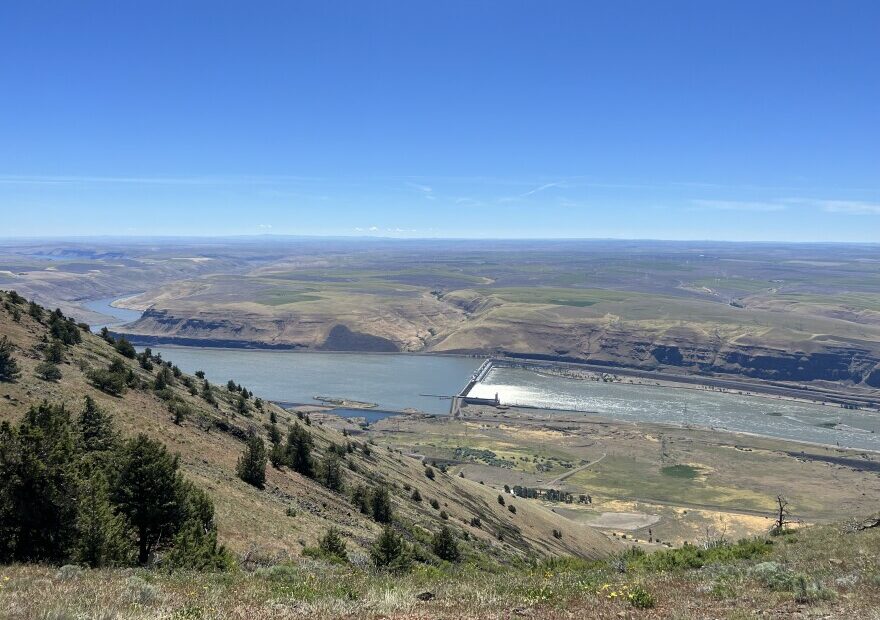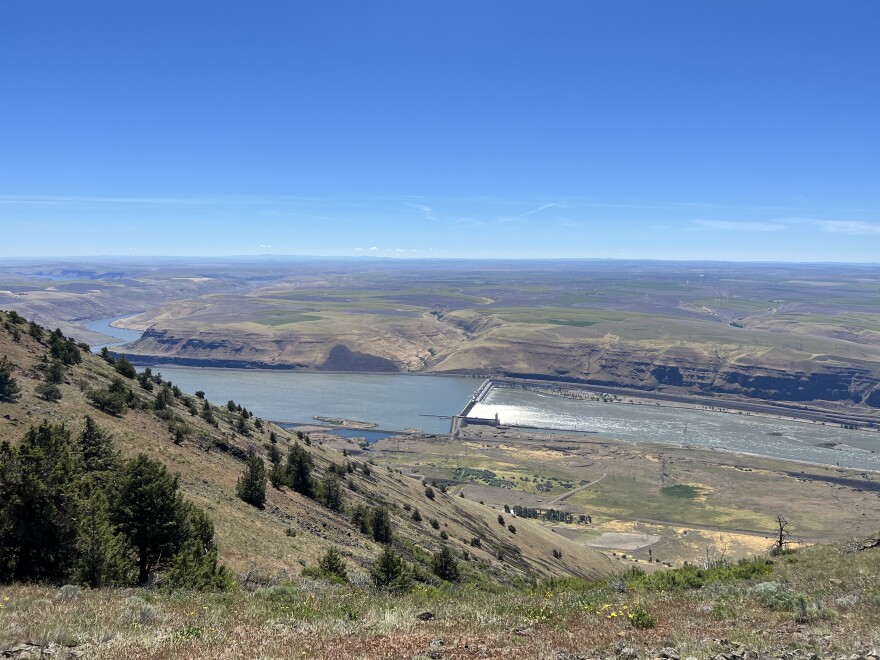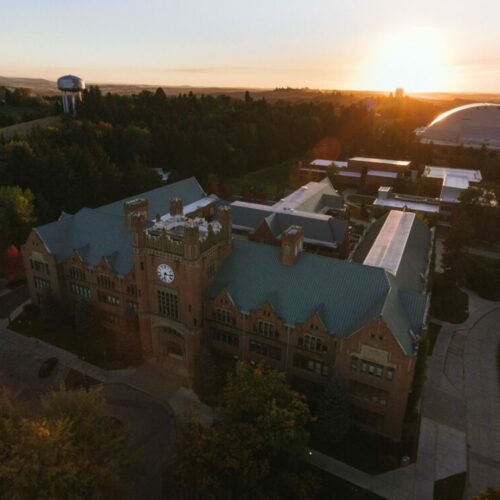
Controversial energy project moves closer to breaking ground
Listen
(Runtime 1:07)
Read
A controversial energy project in south central Washington is one step closer to breaking ground. A federal commission released its final environmental review for the Goldendale Pumped Storage Energy Project – to the consternation of several tribes and environmental groups.
The Goldendale Pumped Storage Project is part of a potential solution to one of the biggest problems for renewable energy development: the variability of wind and solar. As the Northwest transitions off fossil fuels, power will need to be stored for when the sun doesn’t shine and the wind doesn’t blow.
In a final environmental impact statement, the Federal Energy Regulatory Commission, or FERC, recommended moving forward with the project, with some conditions to account for harms the project could cause.
In an emailed statement, Erik Steimle, vice president of Rye Development, praised the release of the final environmental review. Rye Development is developing the energy storage project.
“The release of FERC’s final environmental impact statement is a significant milestone for the Goldendale Energy Storage Project, which will create thousands of jobs and help the state meet its climate goals with minimal environmental impacts,” Steimle wrote.
According to FERC’s environmental review, the alternative proposal would provide a dependable source of energy and would adequately protect environmental resources.
According to the document, the alternative proposed by FERC would be worth the cost.
The closed-loop pumped storage project would act like a battery. It would pump water more than 2,400 feet above the Columbia River. The water would stay in a 61-acre upper reservoir until more energy is needed.
Then, the upper reservoir would release water down through underground concrete- or steel-lined tunnels and turbines, into a lower 63-acre reservoir, generating energy on-demand. When there’s too much energy on the grid, the water would be pumped back to the upper pool.
If constructed, it would be the largest pumped storage project in the region, potentially generating 1,200 megawatts of carbon-free energy. That’s the equivalent of 12 hours of electricity for residents in a city the size of Seattle, Steimle said.
That’s about one-fifth of the region’s need for energy storage, he said in an earlier interview. In addition, Steimle said, the project is key to the Northwest’s carbon-free energy future.
However, that solution comes with a price. The project is within ceded lands of the Yakama Nation. Northwest tribal nations have called the Goodnoe Hills area sacred for thousands of years.
“Green energy is not so green if it’s creating so much environmental injustice,” said Elaine Harvey in an earlier interview. Harvey is a Ka-milt-pah member, known in English as the Rock Creek Band of the Yakama Nation.
“It’s not going to come back after you destroy it. It’s irreversible,” Harvey said.
Moreover, previous environmental impact reviews from Washington state have concluded the project would result in adverse and unavoidable impacts to tribal cultural resources, including gathering and digging spots for roots, berries and medicines, burial grounds, and sacred locations that date back long before colonization.
The Federal Energy Regulatory Commission’s final environmental impact statement found similar conclusions.
The Yakama Nation and the Confederated Tribes of the Umatilla Indian Reservation have written FERC, stating that no mitigation would be acceptable because the loss would be irreversible.
“Our medicines, foods, lands and waters are sacred to us,” said Yakama Tribal Council Chairman Delano Saluskin in a statement. “For too long, these sacred places where we gather our foods and hold our ceremonies have been threatened by development without consultation with, or consent from, our sovereign tribes. This is unacceptable.”
In addition, tribal nations argue they weren’t properly consulted for the project and that government-to-government relations never happened correctly. Advocates argued the lack of consultation in the review led to a less-than-optimal written section on cultural ramifications.
According to the Yakama Nation’s comments on FERC’s draft environmental impact statement, “FERC has substantially failed thus far to uphold its statutory and federal trust obligations to the Yakama Nation and to honor duties codified by the Treaty.”
In 2022, 17 tribal leaders sent a letter to Washington Gov. Jay Inslee asking for better consultation on the project. Inslee has supported the Goldendale Pumped Storage Project. He signed a bill in 2020 that deemed the project of statewide significance and expediting its permitting process.
Environmental groups also have strongly advocated for more tribal consultation. The tendency to treat consultation as a box to check off is concerning, especially as more renewable energy projects are proposed, said Simone Anter, staff attorney for Columbia Riverkeeper, an environmental advocacy group.
“It’s a real national issue. As we continue to meet our climate change goals, with our transition to more renewable energy sources, we’re going to see this come up over and over again,” Anter said.
If consultation is pushed to the side and not a true government-to-government process, she said, that could slow down projects.
“Tribal nations need to trust these processes, too,” Anter said. “Historically, that’s not been there, and it’s very quickly eroding away with the renewable energy transition, as well.
CORRECTION 2/14/24: An earlier version of this story misspelled Simone Anter’s last name.
















